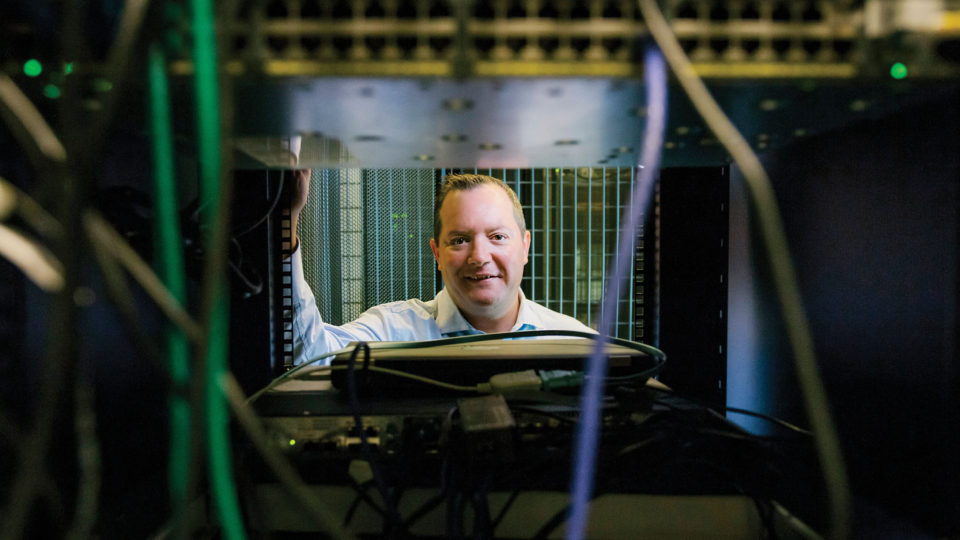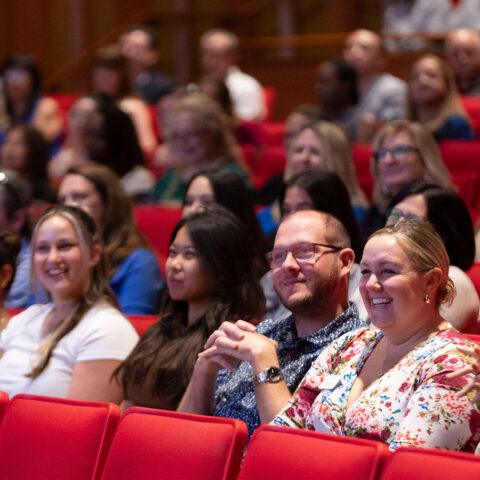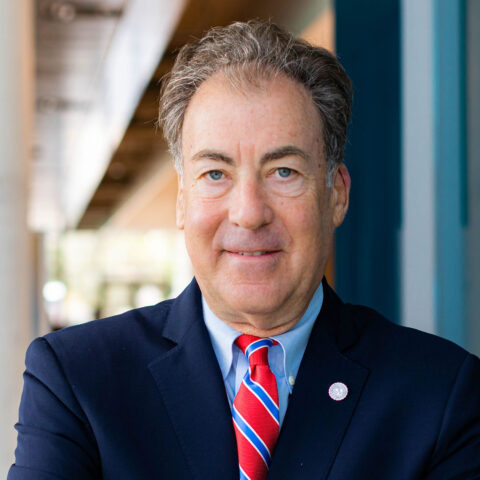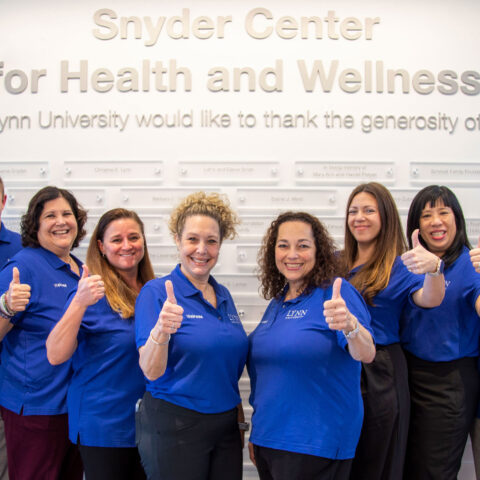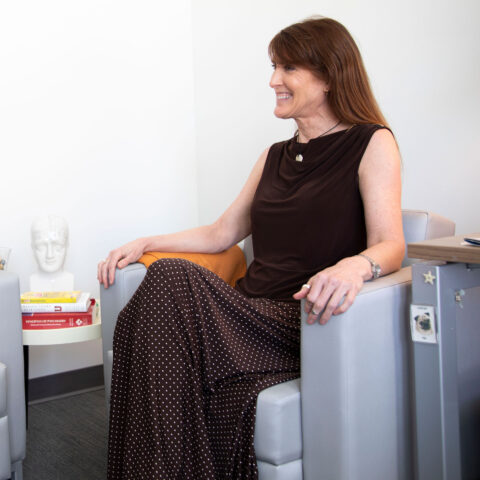The new buildings in Lynn’s 2020 strategic plan get all the glory: golden shovels, shiny blue ribbons, brand-new everything.
Showstoppers that they are, groundbreakings and new buildings tell only one tale of keeping Lynn up to date. The rest of the story centers on smart investments in new technology and the quiet, constant vigilance of maintenance.
“It’s not as exciting,” said Gregory Malfitano ’73, ’75, senior vice president for development and administration. “But it is essential.”
Malfitano oversees both the showstoppers and the daily upkeep, with every lightbulb and library chair in between.
Lynn maintains the same high standards throughout campus, whether a building is a beloved historic one or a brand-new one. “The secret,” Malfitano said, “is to blend the old with the new and to keep it going on a rotating schedule.”
For instance, the Keith C. and Elaine Johnson Wold Center for the Performing Arts is on a paint schedule. The building received a new coat just this summer. The cost: $125,000.
Likewise, Malfitano oversaw many other campus improvements, including the scheduled renovation of showers in residence halls, a new roof installation on the Lynn Student Center and upgrades to multiple classrooms in the Assaf building.
This deferred maintenance plan carries a steep price tag, just under $1 million a year.
“It’s worth it,” Malfitano said. “If every building on campus had a major breakdown all at once because of neglect, then we would have a real problem. Keeping every building in rotation for maintenance prevents that kind of expense.”
Managing the data
When you’re known for innovation like Lynn, it’s a given that technology comprises many campus upgrades. Prime example is Lynn joining forces with Equinix, which operates a 31,000-square-foot, state-of-the-art data center in Boca Raton. It provides Lynn with an off-site infrastructure for data storage and remote access. Partnering with Equinix allows Lynn’s Information Technology department to expand its digital services without having to worry about space or safety.
“This will keep Lynn nimble and allow us to keep pace with changes in technology,” said Christian Boniforti ’02, chief information officer. “It’s a great stepping-stone for the future.”
Data centers like Equinix offer a highly controlled environment —the kind of fireproof, elevated, monitored clean room that is difficult and expensive to maintain on campus. And their solutions are much less costly than if Lynn had to build such data storage from scratch or retrofit an existing building.
“We looked at a number of options,” Boniforti said, “including moving our equipment to the Christine E. Lynn University Center when it’s built. But we have already been at maximum capacity for four or five years, so the best and most cost-effective solution was to outsource to Equinix.”
Before leasing space from Equinix, Lynn’s data equipment was housed mainly in the Louis and Anne Green Center for the Expressive Arts, in a space called “the data room.” Now a private fiber connection links Lynn to Equinix, located less than 2 miles away in the old IBM complex. Equinix will house and secure Lynn’s equipment and its data, creating a redundant network between the two sites. Processing of the data and analytics remains on campus.
Even though this is a significant step forward for Lynn, Boniforti said, most students, faculty, staff and alumni won’t notice any changes. “However, we did increase our bandwidth as an overall strategy, so that should make the internet a little bit faster on campus.”
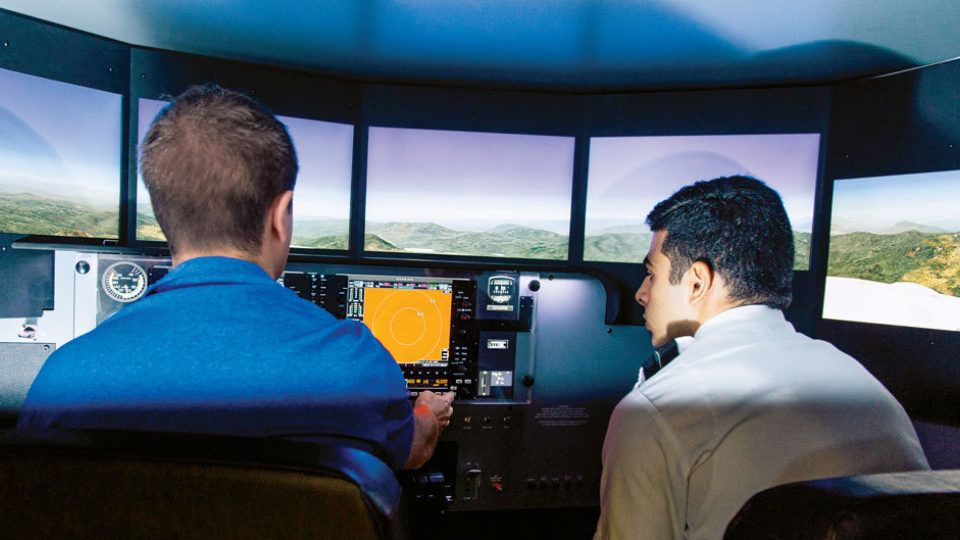
Leading-edge flight training
Lynn’s Burton D. Morgan School of Aeronautics now has an ultra-advanced flight-training device that will catapult the program to new heights. Lynn is the only school in South Florida to use the new Redbird FMX flight simulator, funded in part by a $100,000 challenge grant from the Batchelor Foundation. It is a state-of-the-art device that offers wraparound visuals, configurability for many different corporate aircraft and realistic motion to simulate authentic flight conditions.
“It gives us the same capabilities as the big schools who have huge fleets of planes, but we still have the small-school touch of Lynn,” said Dr. Jeffrey Johnson, dean. “For our stage of training, it’s as good as it gets.”
Lynn’s 2020 strategic plan called for the School of Aeronautics to find its training niche. It happened that in 2015, the Federal Aviation Administration changed regulations governing the amount of flight simulation that can be used in training, significantly increasing the use of flight simulators.
This presented an excellent opportunity for Lynn to bring its new simulator on board. The Redbird allows Lynn to integrate the maximum amount of simulation into its training, while reducing overall costs. This makes the program more appealing to prospective students and keeps them in the program through graduation.
“Our old simulator didn’t match up anymore with our airplanes,” Johnson said. “That’s called negative training. By getting the new Redbird, it emulates the airplanes almost exactly. It’s all positive training, so students see and use the same instruments they’ll use in a real cockpit.”
Johnson said the Redbird also allows the school to offer low-cost recurrency training for local corporate operators. These pilots currently train in Miami or Orlando.
“Lynn will become a powerhouse in local aviation now that this simulator is in operation,” Johnson said. “Local operators can keep their pilots at home and on the line, reducing their training dollars.”
Dominic Liberta, assistant chief flight instructor and a graduate of Lynn’s aeronautics program, said the university’s old simulator, which dated from the early ’90s, was unreliable and slow.
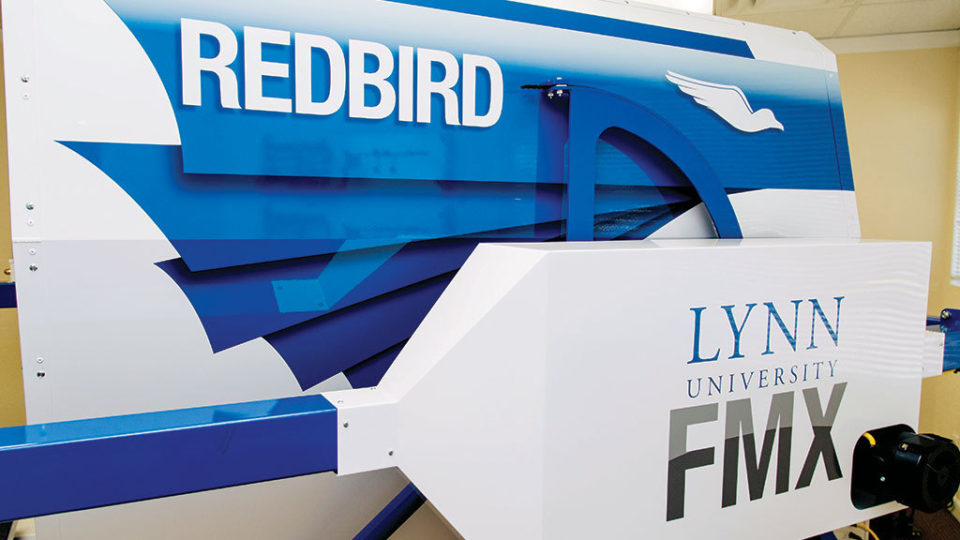
“Having the latest technology is really important, but it’s also a huge financial savings for each student,” he said. “We can do more in one hour in the simulator than one hour in an airplane at a fraction of the cost.”
Senior Andrew Muniz said the savings are substantial. “It will save us thousands in our instrument rating and also our commercial rating.”
The hourly rate for the new simulator is two-thirds the cost of taking up a Cessna and a quarter of the cost of flying Lynn’s Twin Star aircraft, just $110 in the simulator, compared to $400 flying the plane. The total savings for students: $5,000.
The new simulator is ideal for South Florida, where weather conditions are perfect for flying—except when they’re not.
“If it’s raining at the airport, we can go into the simulator and not miss any instruction time,” Liberta said. “We can build bad weather and conditions we don’t have in Boca, like snow, into the instrumentation. South Florida also doesn’t have mountains, but the simulator can provide that training.”
Even more important is the safety benefit of the simulator. In a stable earthbound environment at the aeronautics facility at Boca Raton Airport, the instructor can pause the programming to discuss emergency procedures and scenarios, a far less risky lesson than in the air.
“They can’t crash in a simulator,” Johnson said. “It’s much safer to practice an emergency power-off landing situation in a simulator than in an actual airplane.”
Jamarick Burrel, a junior in the program, said the Redbird will make him a better pilot. “We can make mistakes in the simulator so we won’t make the same mistakes when we’re flying.
Aeronautics program gains altitude with new funding
Donors who helped Lynn fund the new flight simulator:
- Mr. George Weaver and the Buehler Aviation Research Foundation
- Mr. and Mrs. Joseph Liberta Jr. and Wick and Brothers Inc.
- Mr. James Noble Jr.
- Mr. and Mrs. Andrew T. Fiedler
- BP Foundation Matching Gift
- Burton D. Morgan Foundation
- Mr. and Mrs. Jon Batchelor and The Batchelor Foundation Inc.
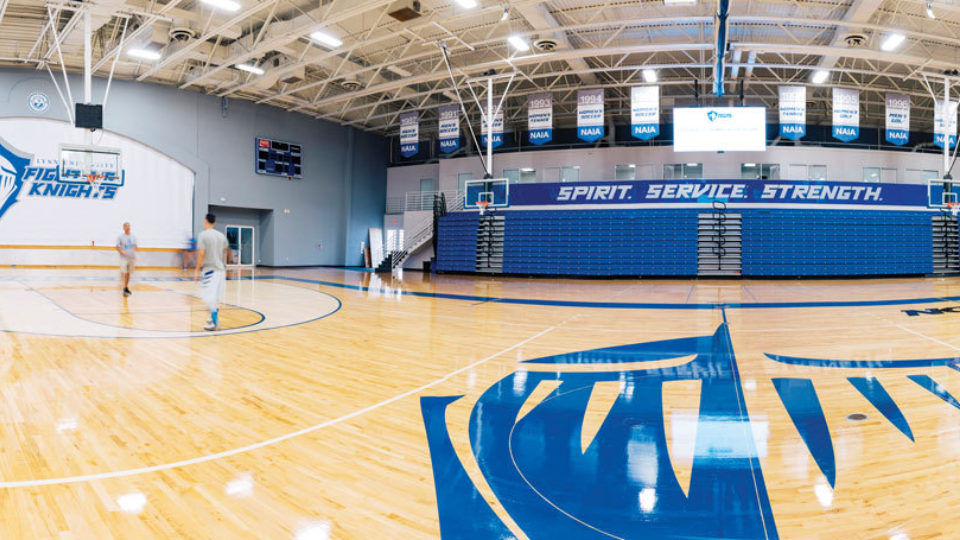
Shining the Fighting Knights’ armor
In August, Lynn completed the renovation of the de Hoernle Sports and Cultural Center. It was an upgrade that relied on old-fashioned elbow grease and high technology.
“Our goal at Lynn is to show our commitment to our athletes and to make sure they have an elite experience,” said Devin Crosby, athletics director. “The old gym was fine, but completing these upgrades shows our students that Lynn has the vision to keep moving forward, to keep making improvements.”
Because the gym is still in such outstanding shape, it required only a little sprucing up—new paint, refinished hardwood flooring painted with the Lynn spirit mark, and a redesign of its Hall of Fame. The home to Fighting Knights men’s and women’s basketball and volleyball now has high-tech video boards as well.
Generous donations from the Blue & White Club made these renovations possible.
What else is new at Lynn?
- Tobacco products are no longer allowed on campus.
- Mary Ann and Harold Perper Intramural Field: New scoreboards and lights (night games!)
- Baseball and softball fields: New fences and windscreens
- Bobby Campbell Stadium: Fresh sod, new speakers and better access to the press box
- Ice hockey: The latest club sport at Lynn (B2 league champions in their first year)
